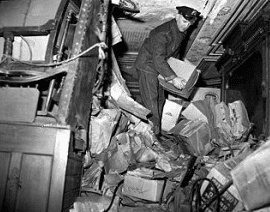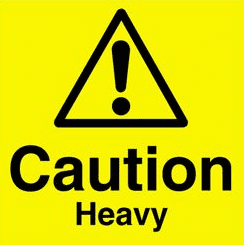News9.com - Oklahoma City, OK - News, Weather, Video and Sports |
Here is a Link to a previous article on Overhauling Hoarder Fires
 Hoarder Fire Photo Courtesy of Keven Smith
Hoarder Fire Photo Courtesy of Keven Smith Courtesy of Oxford Pa Fire Department
Courtesy of Oxford Pa Fire Department Pictures Courtesy of Oxford Fire Department
Pictures Courtesy of Oxford Fire Department Courtesy of Oxford Pa Fire Department
Courtesy of Oxford Pa Fire Department of emergencies. From auto accidents on busy interstates to working house fires with potential hazardous materials we train on these types of events and how to protect ourselves from dangers associated with them. One danger that continues to be overlooked is the exposure risks found inside hoarder homes. Often with the accumulation of massive amounts of belongings come the associated risks from exposure to many types of infectious disease and bio-hazards materials. A first responders can be exposed to these dangers when walking into a situation to assist, such as a emergency medical run or assistance call. Many of us have suspected that the houses we have been going into were dangerous, how dangerous may have been severly underestimated. Let’s review some of the potential exposures first responders may face inside the hoarded environment.
of emergencies. From auto accidents on busy interstates to working house fires with potential hazardous materials we train on these types of events and how to protect ourselves from dangers associated with them. One danger that continues to be overlooked is the exposure risks found inside hoarder homes. Often with the accumulation of massive amounts of belongings come the associated risks from exposure to many types of infectious disease and bio-hazards materials. A first responders can be exposed to these dangers when walking into a situation to assist, such as a emergency medical run or assistance call. Many of us have suspected that the houses we have been going into were dangerous, how dangerous may have been severly underestimated. Let’s review some of the potential exposures first responders may face inside the hoarded environment. Hoarder Fire 4/2013
Hoarder Fire 4/2013
View more videos at: http://nbcphiladelphia.com.
he SPCA rescues nearly two dozen cats out of a Philadelphia home, after it catches fire this evening.
NBC10's Chris Cato talked to a neighbor who lives on the 800 block of Medway Road in Bustleton, and was the first to spot the flames.
"I ran back there and looked out and there was flames coming out of the kitchen," said Denise Mueller.
After firefighters put out the flames, they noticed all the cats inside the home and alerted the SPCA.
Two cats died in the fire. SPCA workers rescued 21 cats in total.
Police call this a "hoarding situation" and they say it's not just because of the number of cats, but because of the condition inside the home.
 The duty of the first arriving officer is to size up the situation accurately. During this process they will use their senses to form a plan of attack by walking around the structure. During your size up you will need to pay close attention to windows, front yards, porches, and entry ways for signs of hoarded interiors. If you make this determination you need to announce “Heavy Contents” to everyone on scene and responding to tell them of the conditions. It’s kind of ironic that I am writing about the use of this term for Dr. G’s website as he was instrumental in developing it. You see he is the brain science professor that helped me realize the meaning behind these two terms placed beside each other.
The duty of the first arriving officer is to size up the situation accurately. During this process they will use their senses to form a plan of attack by walking around the structure. During your size up you will need to pay close attention to windows, front yards, porches, and entry ways for signs of hoarded interiors. If you make this determination you need to announce “Heavy Contents” to everyone on scene and responding to tell them of the conditions. It’s kind of ironic that I am writing about the use of this term for Dr. G’s website as he was instrumental in developing it. You see he is the brain science professor that helped me realize the meaning behind these two terms placed beside each other. We all have terms that we use to describe a hoarded home. From “trash house” to “Collier’s Mansions”, a term derived from the Collier brothers in Manhattan. They made hoarding famous or should I say infamous. We have used multiple versions of describing the same thing. These words have the same meaning behind them but can be harmful to the owners of the homes if they are standing beside one of our radios when the report gets to command. You see, people who live in hoarded conditions have an emotional attachment to their “stuff.” A simple stack of newspapers to you might have a deep emotional meaning for them. You can see how it might cause a problem if they overheard radio traffic describing their belongings as “trash” or their home as a “trash house.” If you choose to use “Collier’s Mansion” terminology you will need to make sure that everyone who might respond to your scene has a true understanding of its meaning.
We all have terms that we use to describe a hoarded home. From “trash house” to “Collier’s Mansions”, a term derived from the Collier brothers in Manhattan. They made hoarding famous or should I say infamous. We have used multiple versions of describing the same thing. These words have the same meaning behind them but can be harmful to the owners of the homes if they are standing beside one of our radios when the report gets to command. You see, people who live in hoarded conditions have an emotional attachment to their “stuff.” A simple stack of newspapers to you might have a deep emotional meaning for them. You can see how it might cause a problem if they overheard radio traffic describing their belongings as “trash” or their home as a “trash house.” If you choose to use “Collier’s Mansion” terminology you will need to make sure that everyone who might respond to your scene has a true understanding of its meaning. That is why I developed the term Heavy Contents. It is politically correct, accurate, and should trigger your brain to start thinking of the increased weight that is added to the structure, even before the first drop of water hits the ground. Hoarded homes often have so much stuff in them that normal living spaces become uninhabitable. If the belongings are occupying that amount of space imagine how much extra weight has been added onto the structure. This is where the term Heavy comes in. A large amount of belongings equals a large amount of weight and it is a term that anyone can relate to, even if they haven’t been taught it, due to the use of common terminology.
That is why I developed the term Heavy Contents. It is politically correct, accurate, and should trigger your brain to start thinking of the increased weight that is added to the structure, even before the first drop of water hits the ground. Hoarded homes often have so much stuff in them that normal living spaces become uninhabitable. If the belongings are occupying that amount of space imagine how much extra weight has been added onto the structure. This is where the term Heavy comes in. A large amount of belongings equals a large amount of weight and it is a term that anyone can relate to, even if they haven’t been taught it, due to the use of common terminology. Another complication inside a hoarded home is the lack of property maintenance. Hoarder conditions make it almost impossible to reach all the points of the structure from leaking pipes, busted ceilings, finding termites, or noticing a leaking exterior wall leading to weakened structural members. This is troubling to us, as firefighters, due to the chances of structural collapse being increased, often without us knowing. This is just another reminder that if we hear the term heavy content called out that we should automatically think of increased collapse risks.
Another complication inside a hoarded home is the lack of property maintenance. Hoarder conditions make it almost impossible to reach all the points of the structure from leaking pipes, busted ceilings, finding termites, or noticing a leaking exterior wall leading to weakened structural members. This is troubling to us, as firefighters, due to the chances of structural collapse being increased, often without us knowing. This is just another reminder that if we hear the term heavy content called out that we should automatically think of increased collapse risks. The second of the two words should warn you of the dangers that lie inside. With hoarder homes you can face belongings that can reach all the way to the ceiling. Add in a fast-moving fire with thick dark smoke and it’s a recipe for your death. If you hear the call of heavy content you need to go to a defensive mindset. Not so much that you need to abandon interior operations, although that would be a wise decision many times, but you need to be more careful in selecting your point of entry, hand tools, and absolutely do not enter without a thermal imagining camera and a hose or search rope to help aid in your exit. In a hoarder home the right and left hand searches are basically useless due to the inability to use the walls. Your only link to the outside is that hose or search line if your TIC batteries fail.
The second of the two words should warn you of the dangers that lie inside. With hoarder homes you can face belongings that can reach all the way to the ceiling. Add in a fast-moving fire with thick dark smoke and it’s a recipe for your death. If you hear the call of heavy content you need to go to a defensive mindset. Not so much that you need to abandon interior operations, although that would be a wise decision many times, but you need to be more careful in selecting your point of entry, hand tools, and absolutely do not enter without a thermal imagining camera and a hose or search rope to help aid in your exit. In a hoarder home the right and left hand searches are basically useless due to the inability to use the walls. Your only link to the outside is that hose or search line if your TIC batteries fail. Hoarder homes present special challenges for first responders, including fire, EMS and police. The hoarded environment is especially dangerous because of the heavy loads, the unpredictability of the contents and the limited ingress and egress. Hoarder home emergencies cannot be treated the same a non-hoarded homes. Thanks Ryan for taking the lead on this critically important topic.
Hoarder homes present special challenges for first responders, including fire, EMS and police. The hoarded environment is especially dangerous because of the heavy loads, the unpredictability of the contents and the limited ingress and egress. Hoarder home emergencies cannot be treated the same a non-hoarded homes. Thanks Ryan for taking the lead on this critically important topic.
 Photo Courtesy of Sheperdstown Fire
Photo Courtesy of Sheperdstown Fire Photo Courtesy of Sheperdstown Fire Dept.
Photo Courtesy of Sheperdstown Fire Dept. Be Prepared For Overhaul Dangers
Be Prepared For Overhaul Dangers Photo Courtesy of Sheperdstown Fire
Photo Courtesy of Sheperdstown Fire